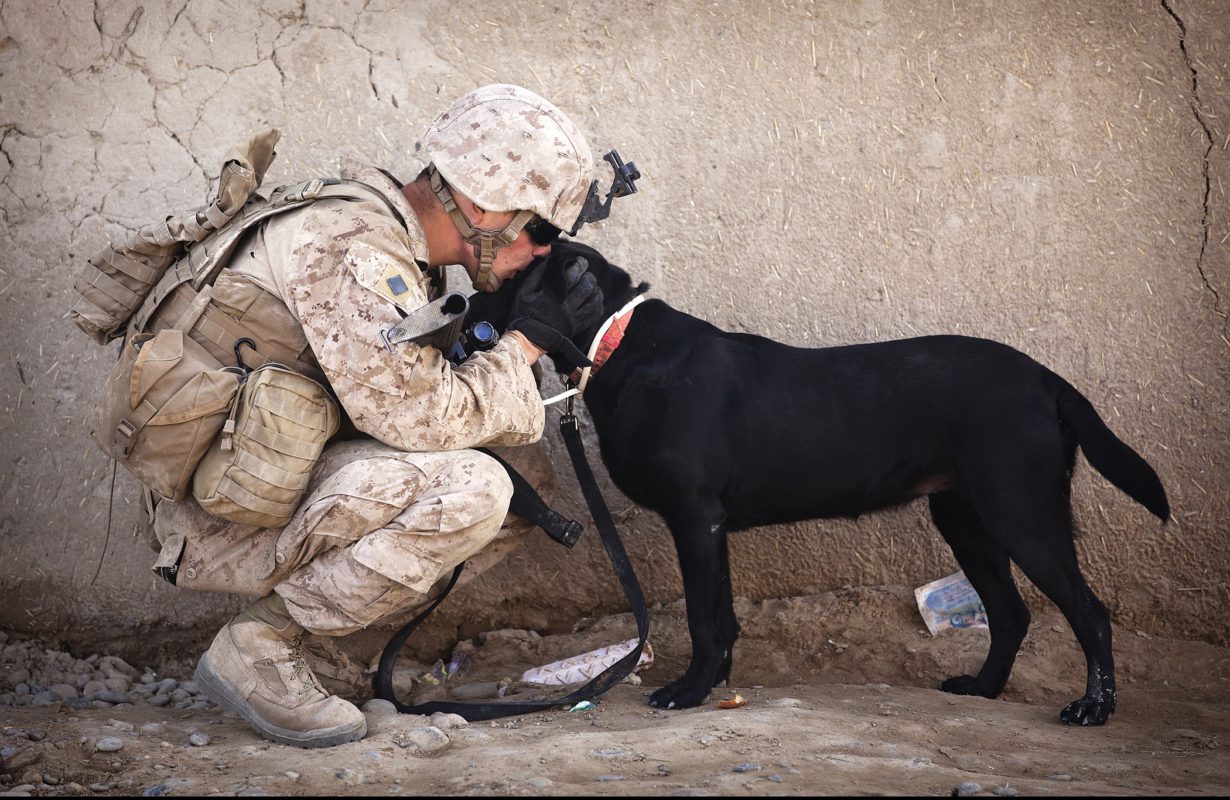About Guidance Training
Belief System
Characteristics of and the changes in the”belief structures” developed for our canine friends.
There has and always will be a “great” debate over what is the best mechanism for gaining cognitive behavioral control over ones canine?
Is it through “corrective” aversive control methods or through “reward-based” appetitive encouragement efforts?
Or is there a third, new, non-aversive technique that encompasses and satisfies both the control method and encouragement effort?
Preview: A simple “no” is most often not enough to change an inappropriate behavior.
We are not here to argue or dictate the scientific literature as the evidence has been well documented and written about for generations and made available for all to review at one’s leisure. (Classical Conditioning, Instrumental Conditioning, Animal Cognition, Aversive Conditioning, Conditioned Safety Stimulus, Discrimination Learning, Generalized Avoidance Response, Generalized Relaxation Response, Negative Reinforcement, Negative Punishment, Positive Reinforcement, Motivation, Safety Signal Theory, Opponent Process Theory, Operant Conditioning, Incentive Learning Theory, Drive Theory, Conditioned Stimulus, Non-Conditioned Stimulus, Partial Reinforcement, Reward Appetitive Conditioning, and etc…)
However, it is important to condense this information into the main structures utilized during our Collective Evolution overseeing the development of electronic stimulation control methods, and they began with:
Corrective/Punishment Aversive Structure:
After many years of the canine world having experience utilizing potent, electrical correction, impulse stimulus in their training methods and with the results not really satisfying their needs to control dogs misbehaviors, they sought assistance from the scientific community to create alternative, improvement structures.
Escape/Avoidance Aversive Structure:
Herein, began the next generation of training disciplines which followed the scientific communities escape/avoidance paradigm.
This structure allowed the dog to receive:
- a neutral stimulus – a short burst of an electronic impulse stimulus – called conditioned stimulus (CS) followed by
- a potent stimulus – a continuous length of electronic impulse stimulus – called unconditioned stimulus – (US).
After repeated trials, the dog would soon begin to respond immediately to the neutral stimulus (CS) with only seldom use of the potent stimulus (US) to reinforce the neutral stimulus (CS).
However, it was soon noticed that for escape/avoidance paradigm to be most effective, (and by scientific definition), it had to be administered at an aversive static level and therein did not address the overall desire to reduce the occurrence of using electronic impulse stimulus activations – as it was still based upon being an aversive structure.
Afterwards, what was learned by observations was that the timing of the occurrence of the stimulus was as important as the level of the stimulus. It could be perceived at one moment as a negative reinforcement or as a positive reinforcement; or when not applied “at all”, it could cause “worry” by the dog as to when or where the aversion would occur.
Herein, and as always, the advocates for utilizing food rewards (treats) as a means to engage cognitive control over the dog’s actions; were present. (This style always worked when the dog was close-in to the handler and therein both entities could get their short dose of the “feel good-moment”).
Incentive Non-Aversive Structure:
What was really needed was a true non-aversive “structure” that would overcome the dog’s adrenaline rushes, but not interrupt training momentum, and to be accomplished at distances of greater than 50 ft.
What became the next obvious choice for us engineers was to design using lower levels of the afore mentioned Aversive Structures, and provide variable levels of electrical impulse stimulation which are available by most of today’s manufacturers.
As these electronic impulse levels lowered, dogs began accepting their learning structure more quickly and even elevating their performance well above expectations (and even within generations of the same “breed lines”).
Then, questions arose, “How and why were dogs so willing to answer the bell; when in the past, they were not as willing?”
Some of us, who had been in the industry for years and who had lived through both styles of the Aversive Structure and then being personally involved with this new Non-Aversive Structure; continued our investigations.
We knew that the reward-based community had been borne out of observing many decades of users overusing and abusing the aversive techniques on dogs and they were not buying onto this new non-aversive process without some sort of explanation from the scientific community – even to the point of stating that, “Anyone using electronic devices could not really be called a dog trainer when using these methods.” They were right, the previous misuse and overuse was wrong.
In devoting substantial ground time to answer the above question, we soon understood what the transitioning moment was all about – the dogs were really teaching us.
A listing of our findings:
Punishment/Corrections Based is:
- An external experience that is immediately provoking and activated after the dog has committed to do something,
- Immediately the dog is looking for what to watch out for or from whom,
- Confusion occurs unless the handler/trainer explains what should be next to do to be safe (generally the trainer is not noticing this need).
- No permanence of habit as the dog’s expectation and belief is that at some point in time, they will receive an electronic message that makes them feel very uncomfortable.
Escape/Avoidance Based as an improvement:
- An external experience that may be provoking and does appear after the dog has committed to do something just like Corrective/Punishment; but here the first neutral electronic cue signal allows the dog to be notified that a secondary potent reinforcement may occur if it does not act quickly.
- Immediately the dog is looking for what to do to avoid the secondary potent stimulus,
- This predictor can reduce the confusion as long as the trainer explains what is next to do to be safe – permanence of habit is improved from the use of true Corrective/Punishment Training as long as the second potent stimulus is offered intermittently as a convincer (a partial reinforcement).
Reward Based is as it should be:
- An external experience for the dog with its handler,
- Wherein, “I trust you”, is the dog’s belief, it is internalized,
- The dog believes and trusts that the handler will be there for the dog at all times to satisfy its appetitive nature.
Incentive Based is new to most (even us – always wished we would have learned of it’s benefit sooner):
- The timing of activation of the outside stimulus is completely opposite than the activation rules of Corrective/Punishment, and Escape/Avoidance Structures and the levels used to gain control are far below anyone’s expectations,
- It is the quickest means to create an internal experience for the dog, wherein this outside stimulus consistently follows the dog and belongs totally to the dog,
- Herein, the dog’s belief system is, “I trust me” as the stimulus becomes engrained in the dog’s own actions – “It is what I do which turns it off, I believe it is what I do and I am convinced that I am in control.”
- Note: As long as it is non-aversive, the permanence of habit is quick, pronounced, and long-lasting.
Please appreciate what the scientific community has known for many years:
“When an outside non-aversive stimulus (below the pain threshold of a dog under-going training) is superimposed onto a dog’s sensory system during the dog’s movement toward the objective, and then this outside stimulus ceases when the dog arrives at the objective; then this action and its result will become learned very quickly and with improved permanence of habit.”
If you think of athletes and how they achieve great success, you will always see a coach in the background who is guiding the athlete through their exercises allowing them to continue to be successful building upon their own self-confidence.
When the handler/trainer allows their dog to acquire this fact – that they indeed are in control of their own actions, the handler will observe a willing performer at measurable, improved performance levels.
This transcends from the aversive style of, “You will do it, my way” offering internal self-confidence – not achievable even through the standard food/treat reward based structure whose performance levels generally succumb very quickly.
We have developed training techniques and have tested these results upon many dogs (breeds) over the last 25 years to know that by merely adjusting the moment of activation will change your results in the first training session. That is how easy this new non-aversive technique allows for the dog’s “Belief Structure” to evolve.
Make sure that you activate the stimulus early and offset at the moment that the dog achieves the target behavior (objective).

